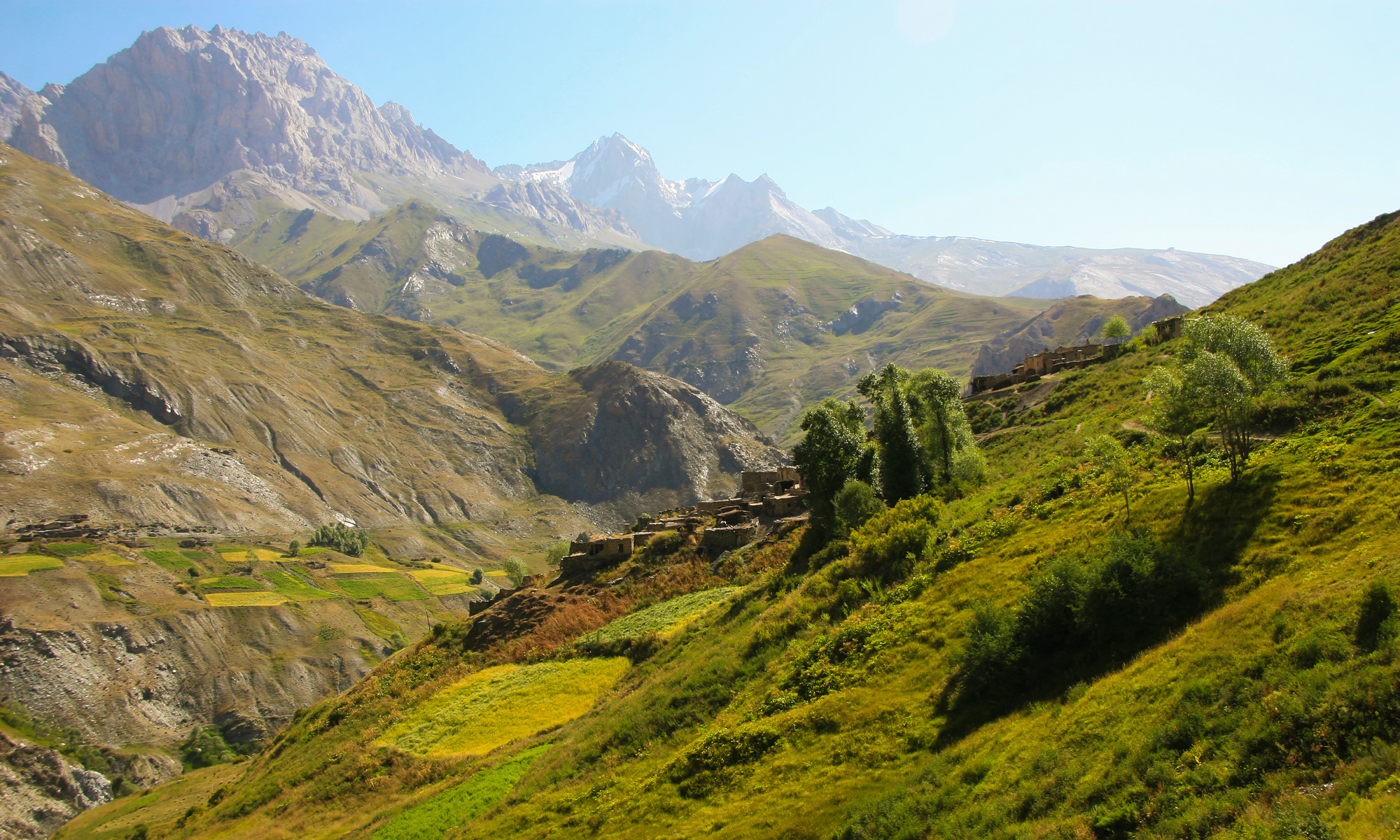In a highland valley shaped by exile, return, and environmental fragility, livestock is more than livelihood—it is legacy. The flocks that graze Yaghnob’s slopes sustain households, link generations, and symbolize resilience in a landscape where survival is never taken for granted.
Yet today, the very animals that once represented self-reliance are placing unprecedented strain on the valley’s delicate alpine ecology. In the absence of coordinated grazing systems, veterinary services, or environmental oversight, Yaghnob’s pastures are degrading quietly, but rapidly.
If action is not taken, the valley’s capacity to support both people and animals will diminish—with long-term consequences for food security, land health, and community resilience.
Historically, Yaghnobi communities practiced transhumance—the seasonal migration of herds between valley settlements and high-altitude pastures (known locally as yallaq). This movement was not only ecological, but deeply social: herding routes were inherited, communal boundaries respected, and rotational patterns observed to allow for grass recovery.
No written maps were needed—memory, trust, and mutual obligation kept the system balanced.
However, today the Yaghnob Valley faces a growing pastoral crisis, marked by a combination of overgrazing, climate stress, and institutional vacuum.
Field assessments and interviews with returnee families indicate:
- Overuse of accessible pastures, especially near settlements and streams
- Loss of native grass cover, replaced by hardy, less nutritious shrub species
- Soil erosion and compaction, especially around rest points and water sources
- Increased risk of landslides on grazed slopes during spring thaw
- No formal system for pasture rotation, land tenure, or herd limits
In some areas, livestock numbers have doubled since the 1990s, driven by household needs and limited economic alternatives. But this growth is not matched by expanded infrastructure, fodder storage, or rotational planning.
The result: shrinking grass, weakened soils, and longer winters with less feed.
Climate change acts as a multiplier.
- Earlier thaws prompt premature grazing, leaving less time for grasses to mature
- Hotter, drier summers shorten the forage window and dry out alpine meadows by mid-season
- Reduced snowfall and glacial retreat lower stream levels, stressing both animals and vegetation
- Traditional phenological cues—cloud patterns, stream sounds, plant timing—become unreliable
Without modern tools or predictive models, herders must navigate this new uncertainty with only partial knowledge—risking herd health and land degradation simultaneously.
Unlike in parts of Kyrgyzstan, Mongolia, or northern Afghanistan, Yaghnob has no pasture management authority, no veterinary outreach system, and no land-use monitoring mechanisms.
- Carrying capacity assessments are non-existent
- Veterinary support is sporadic or absent
- Fodder reserves or silage programs are limited or improvised
- Land tenure and pasture access are governed informally, leading to tensions
This vacuum leaves herders in a cycle of short-term decision-making: graze now, or lose the grass to another flock. The outcome is predictable—a race to the bottom, where land loss becomes collective, even when decisions are individual.
To restore balance in Yaghnob’s pastoral systems, a multi-level, community-led approach is urgently needed. Drawing on global best practices and local experience, the following actions are recommended:
- Community Pasture Committees
- Establish local grazing councils with representation from elders, women, and youth
- Use participatory mapping to define seasonal routes, rest zones, and high-risk areas
- Develop local codes for herd size, movement timing, and conflict resolution
- Climate-Responsive Herding Practices
- Support fodder production (hay and leguminous crops) and low-cost storage facilities
- Encourage smaller, healthier herds with higher productivity, rather than herd expansion
- Introduce weather-adaptive herding calendars, linked to local observations and regional climate data
- Veterinary and Extension Services
- Provide access to vaccines, deworming, and emergency livestock care
- Link animal health to human nutrition and public health
- Policy Integration
- Embed grazing regulation into the proposed Natural-Ethnographic Park framework, ensuring pastoralists are recognized as environmental stewards
- Pilot payment-for-ecosystem-services models for those maintaining pasture health
- Connect local systems to national rangeland strategies and climate adaptation plans
In Yaghnob, livestock are not only economic units—they are cultural symbols, seasonal markers, and daily companions. Goats and sheep appear in proverbs, lullabies, and wedding songs. Yet no animal, however agile or revered, can thrive if the pasture beneath it collapses.
